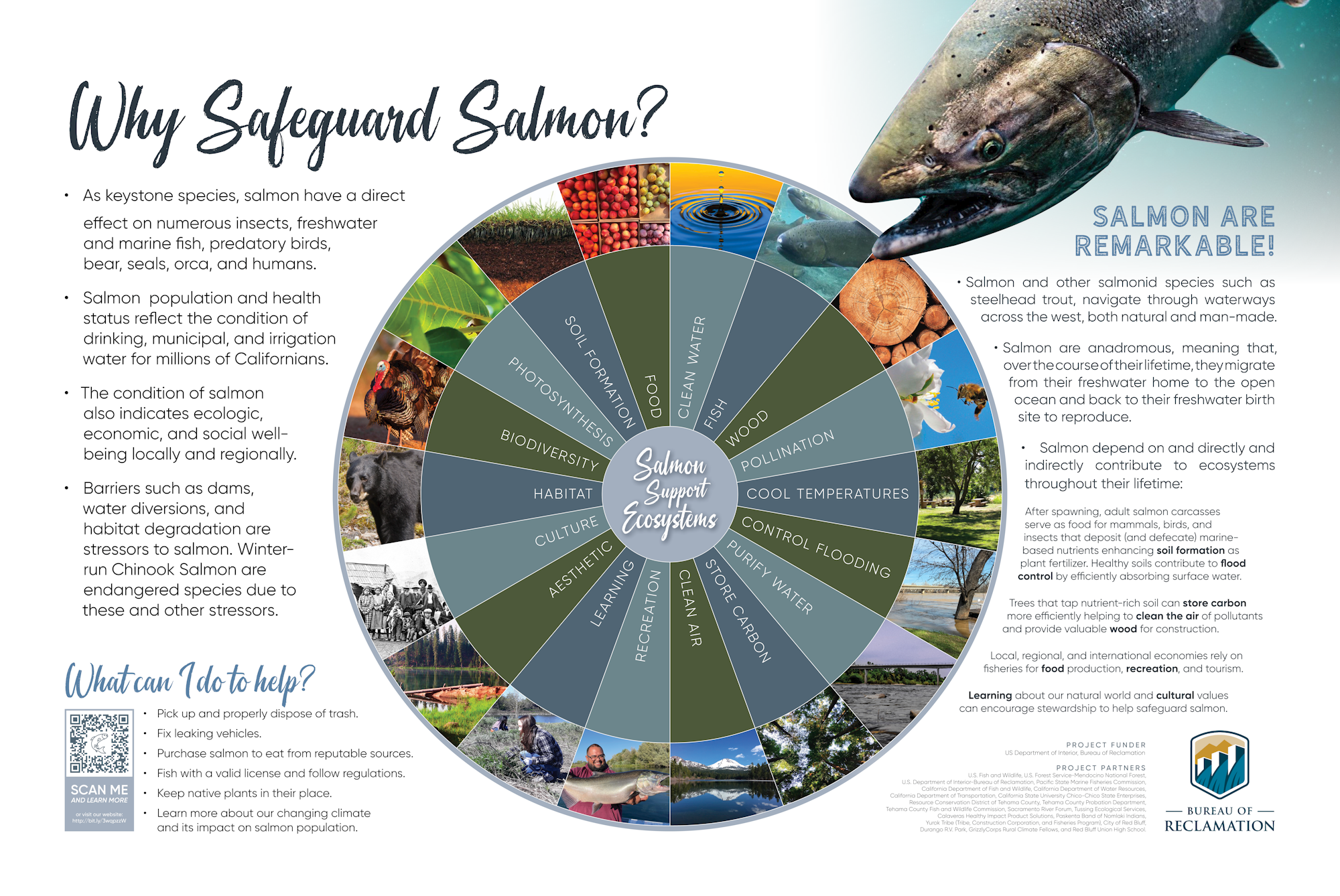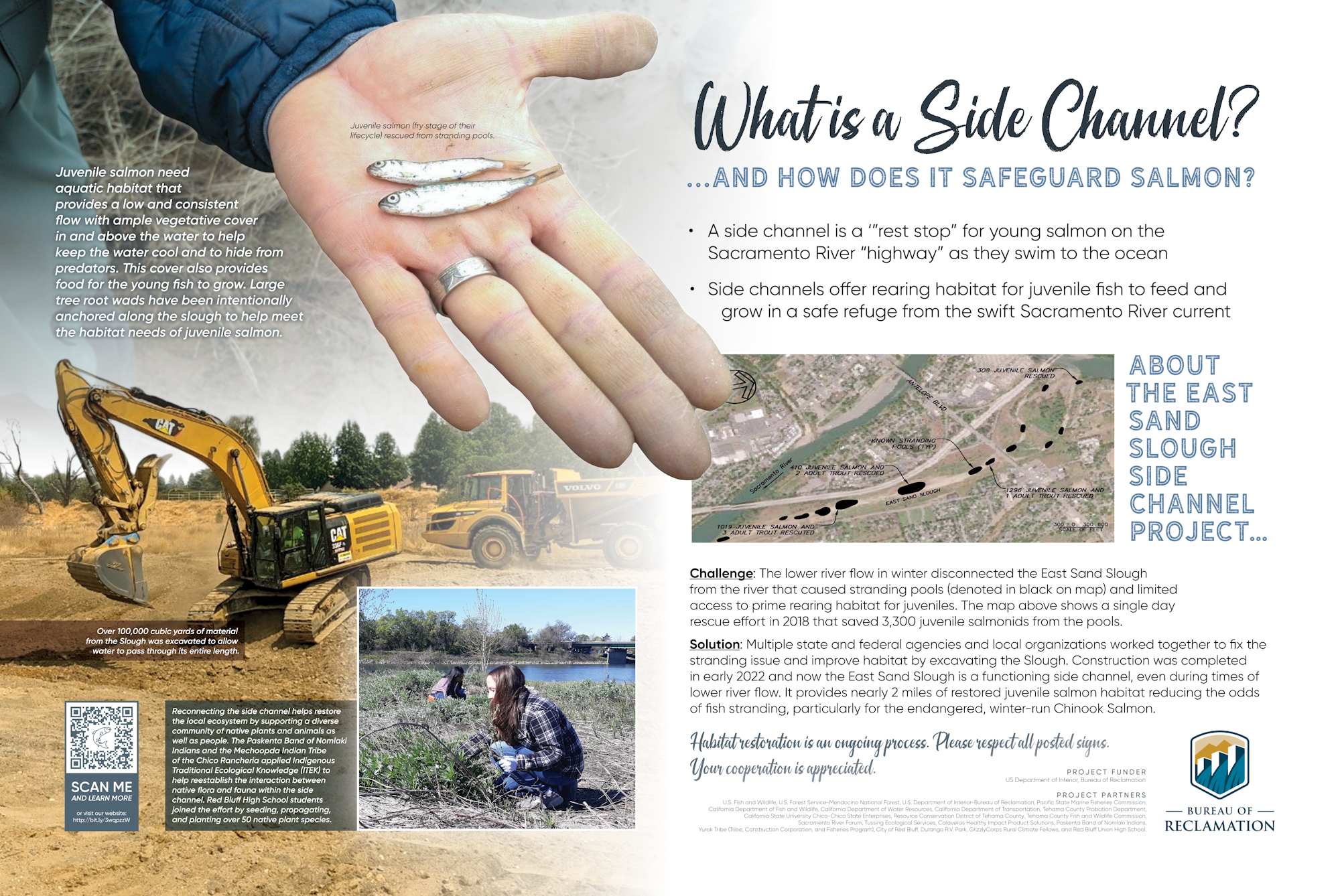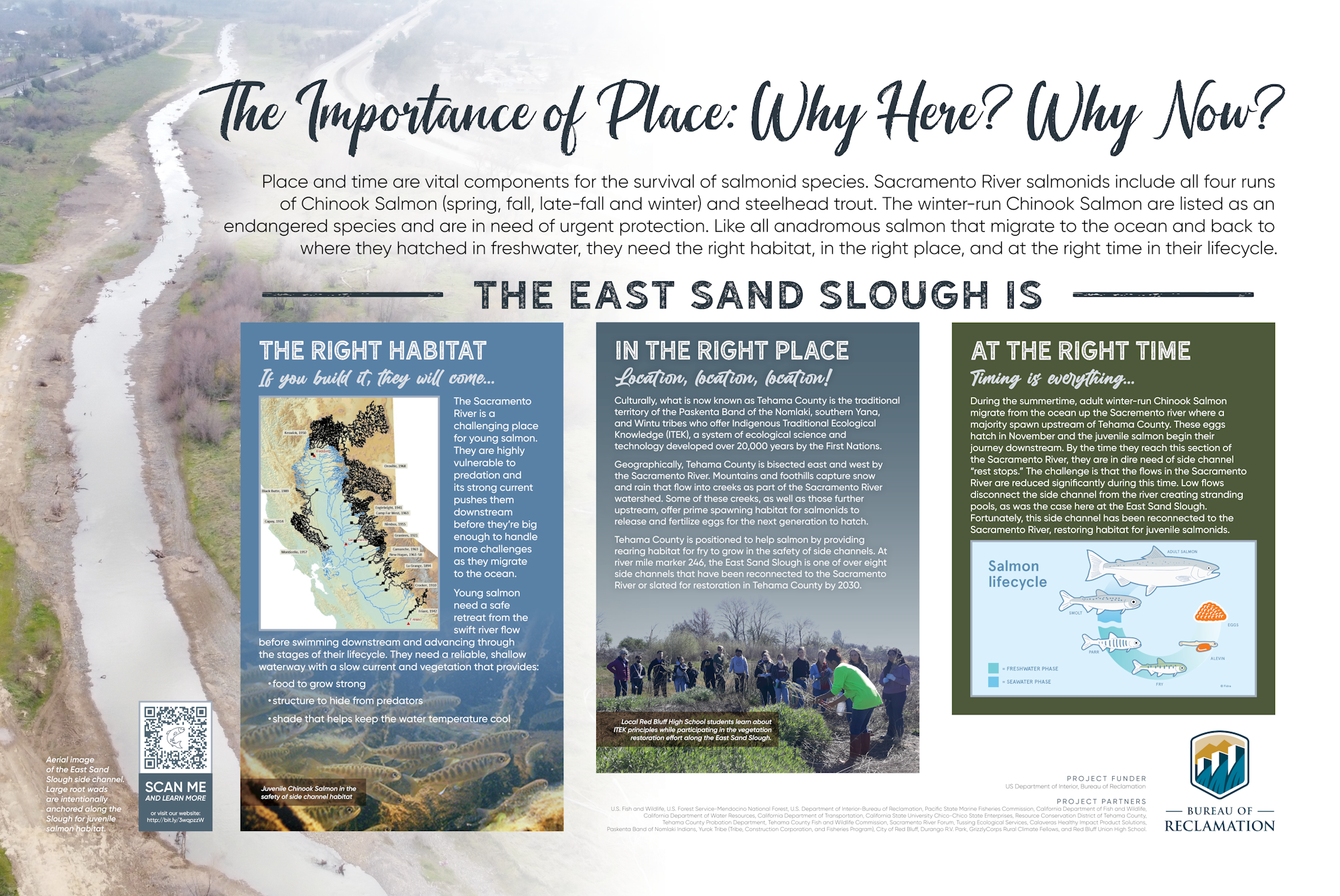East Sand Slough Side Channel
The East Sand Slough Side Channel Reconnection Project (Project) has created nearly two consecutive miles of restored juvenile salmon habitat, particularly for endangered winter-run Chinook Salmon. In collaboration with 18 state and federal agencies, educational institutions, tribes, and local organizations, the slough is now a functioning side channel offering an important rest stop for young salmon to feed and grow in a safe refuge from the swift Sacramento River current. The Project is featured in the film short, Side Channels: Safeguarding Salmon which debuted at the Wild & Scenic® Film Festival On-Tour, Red Bluff on March 25, 2023.
For more information about some of the RCDTC's side channel reconnection projects and the importance of safeguarding salmon, check out this StoryMap.

The East Sand Slough is located in Red Bluff, California and runs parallel to the east side of Interstate 5, under the Antelope Boulevard/Highway 36 bridge. Historically, lower river flows in the Sacramento River during winter have disconnected the East Sand Slough from the river, creating stranding pools and limiting access to prime rearing habitat for juvenile salmonids.

In 2017 the Sacramento River Forum (Project lead) began hosting interagency discussions in how to improve suitable rearing habitat for juvenile salmon within the East Sand Slough. The RCDTC served as the construction lead for the Project. Starting in August 2021, the RCDTC worked with the Yurok Tribe’s construction team to excavate over 100,000 cubic yards of material from the slough to connect it to the upstream and downstream ends to the Sacramento River. This ensures flow through the channel, even during times with a lower Sacramento River water level.
After excavation, instream habitat structures, such as tree root wads, were strategically anchored in the channel to help meet the habitat needs of juvenile salmon. Thereafter, the channel was regraded in preparation for native plant restoration. The Paskenta Band of Nomlaki Indians and the Mechoopda Indian Tribe of the Chico Rancheria applied indigenous Traditional Ecological Knowledge (TEK) to help reestablish the interaction between native flora and fauna within the side channel. More than 50 different species were planted along the banks of the slough, resulting in approximately 5,767 linear feet of native revegetation.
This Project was completed in March 2022. Habitat restoration is an ongoing process. Your cooperation is appreciated.
What Can I Do to Help?
+ Pick up and properly dispose of trash.
+ Fix leaking vehicles.
+ Purchase salmon to eat from reputable sources.
+ Fish with a valid license and follow regulations.
+ Keep native plants in their place.
+ Keep vehicles out of the slough.
+ Keep flags in there place. Colored flags mark the location of various native plant plugs and seeding efforts.
+ Learn more about our changing climate and its impact on salmon population.

This project is part of the Upper Sacramento River Anadromous Fish Habitat Restoration Program and is funded by the Central Valley Project Improvement Act, the US Bureau of Reclamation, the US Fish and Wildlife Service, and the Bonneville Environmental Foundation California Water Stewardship Program.
